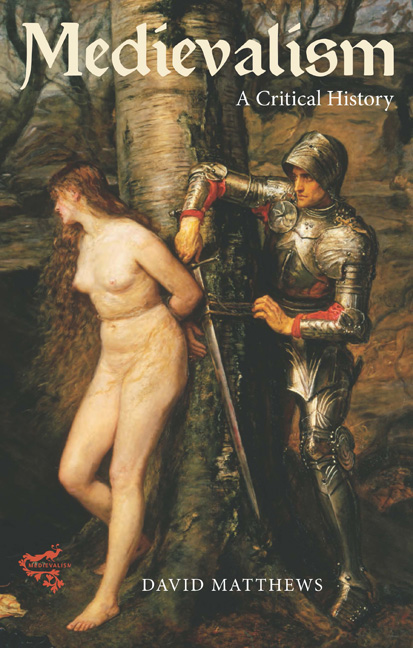Book contents
- Frontmatter
- Dedication
- Contents
- List of Illustrations
- Preface
- Acknowledgements
- Abbreviations
- Introduction
- I TAXONOMIES
- 1 How Many Middle Ages?
- II TIME, SPACE, SELF, SOCIETY
- III HISTORY AND DISCIPLINE
- Conclusion Against a Synthesis: Medievalism, Cultural Studies, and Antidisciplinarity
- Afterword
- Appendix I The Survey of Reenactors
- Appendix II Key Moments in Medievalism
- Bibliography
- Index
1 - How Many Middle Ages?
from I - TAXONOMIES
- Frontmatter
- Dedication
- Contents
- List of Illustrations
- Preface
- Acknowledgements
- Abbreviations
- Introduction
- I TAXONOMIES
- 1 How Many Middle Ages?
- II TIME, SPACE, SELF, SOCIETY
- III HISTORY AND DISCIPLINE
- Conclusion Against a Synthesis: Medievalism, Cultural Studies, and Antidisciplinarity
- Afterword
- Appendix I The Survey of Reenactors
- Appendix II Key Moments in Medievalism
- Bibliography
- Index
Summary
In a case that came before Southwark Crown Court in 2010, a woman found guilty of slashing her lover's face with a broken glass was let off with a conditional discharge and a suspended prison sentence because the judge believed she had been threatened with medieval behaviour. During a drug-fuelled sex session – Britain's Daily Mail reported – the defendant's lover had wanted to use nipple clamps and hot wax; she had resisted, which led to an assault. Judge Michael Gledhill sounded sympathetic as he said to her, “I've seen at least two implements which looked to the untrained eye as medieval torture instruments and not surprisingly you did not want to have pain inflicted upon you.” The sex was consensual, and indeed the couple were lovers of long standing. But things got medieval, so the law stepped in.
It is easy to hear the forlorn voice of the expert in medieval studies trying to object to the stereotypes here: “How did you know they were medieval torture instruments? Do you realise that torture was illegal for much of the Middle Ages? That in fact this kind of thing really belongs to the Tudor period?” Warming to a theme, that medievalist might also want to add that the burning of witches was more a feature of the sixteenth century than the Middle Ages, and that on the whole, many practices we regard as barbaric were more prevalent in the Renaissance than in the preceding era.
That medievalist, of course, would be missing the point. In the popular view, instruments of torture are always medieval. So, too, is the burning of witches, and many another grotesque practice. This conception of the Middle Ages is deeply entrenched. A Crown Court judge knows what he means by talking about medieval practices and a tabloid newspaper editor knows that readers will understand and even take perverse pleasure in this modern manifestation of the “medieval.” Conversely, if the defence had been constructed on an objection to “Elizabethan” torture, or “Tudor” barbarism, there would have been no matrix of accepted understandings to make it effective.
- Type
- Chapter
- Information
- MedievalismA Critical History, pp. 13 - 42Publisher: Boydell & BrewerPrint publication year: 2015



